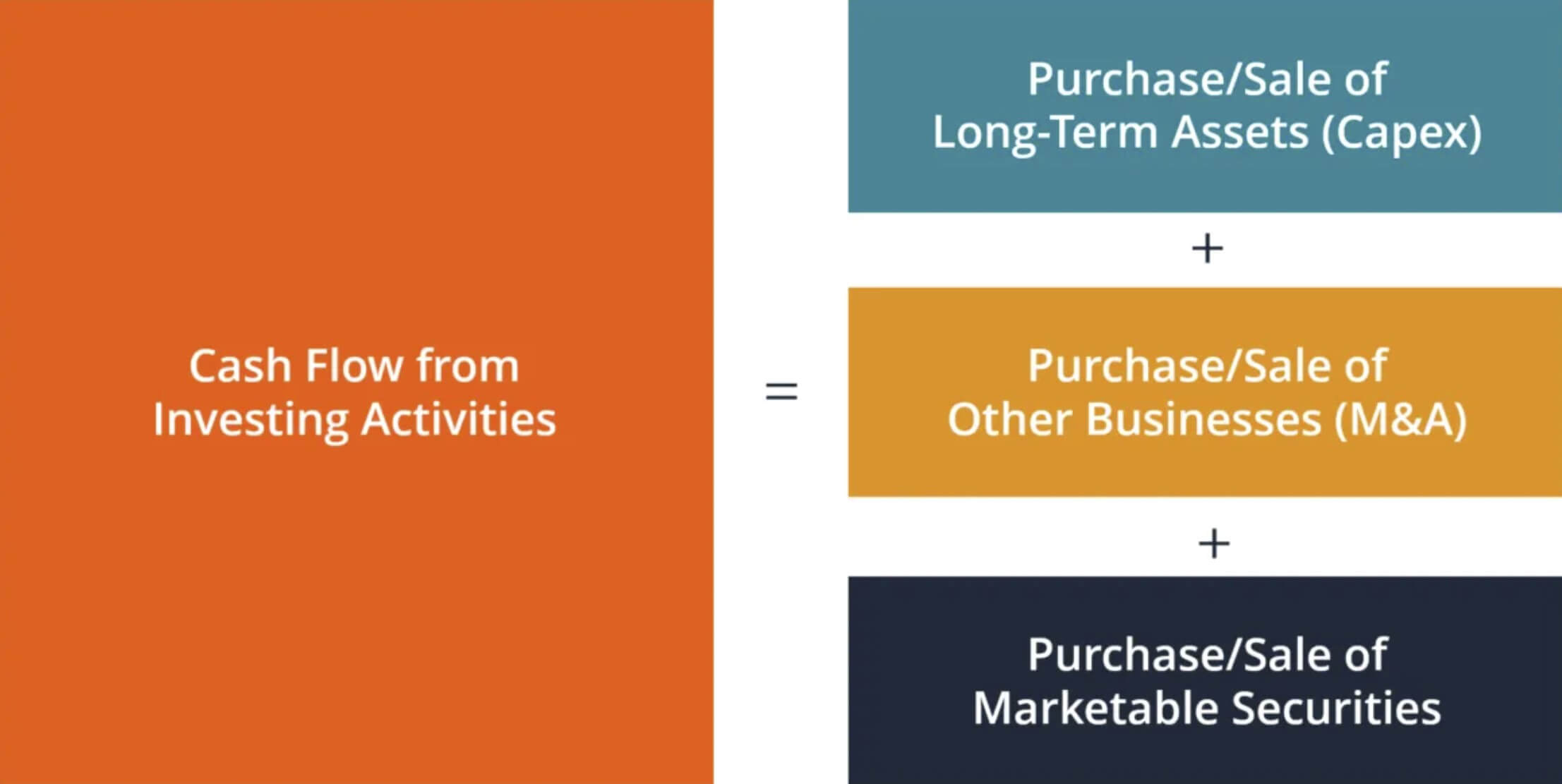Cash flow
Cash flow
Cash flow from investing activities is the cash that has been generated (or spent) on non-current assets that are intended to produce a profit in the future. Types of activities that this may include are capital expenditures, lending money, and the sale of investment securities.
Why Cash Flow is So Important
If incoming company assets are dedicated to inventory, accounts receivable, or real estate, for example, which aren’t sufficiently liquid, paying monthly bills to keep the lights on could be difficult.
On the other hand, a company with strong cash flow, that can easily meet its short-term obligations using money or equivalents, may have also borrowed against its potential growth or may have sold assets that make servicing long-term debt unsustainable. This could lead to unprofitability, but would not at all be reflected in the company’s cash flow.
For example, if a startup received cash from investors who were expecting a new product to generate revenue in the future, the stability of the company would be ensured for the short term. However, without revenue with which to generate additional cash flow, the long-term stability of the company is by no means certain.
Cash Flow from Investing
You can think of flow investing the same way you think about dividends with stocks. At some interval, whether it is monthly, quarterly, semi-annually or annually, you will receive regular cash distributions from your investment.
Capital expenditures (CapEx), also found in this section, is a popular measure of capital investment used in the valuation of stocks. An increase in capital expenditures means the company is investing in future operations. However, capital expenditures are a reduction in cash flow. Typically, companies with a significant amount of capital expenditures are in a state of growth.
Example
You are buying a portion, or all, of an asset that can lease or otherwise it, can generate income. With real estate investing, cash flow is the result of proceeds from rent payments. Let’s take a multi-family apartment building as an example. Say the property has 50 units and each unit rents for $1,000 per month. If we assume an expense ratio of 40%, the net income per month on that property is $30,000. While it is always a good idea to keep some portion of that net income in reserves, the remainder of the income is available for distribution, in this example, $28,500.
Although cash flow investing is a great strategy for the right investor, there is always the possibility that the investment will not cash flow (for example, there could be unforeseen vacancy that reduces your rental income below total expenses, among other possibilities). Performing proper due diligence and fully understanding the possible outcomes will help investors determine the right investments for them.
Investing activities can include:
- Purchase of property plant, and equipment (PP&E), also known as capital expenditures
- Proceeds from the sale of PP&E
- Acquisitions of other businesses or companies
- Proceeds from the sale of other businesses (divestitures)
- Purchases of marketable securities (i.e., stocks, bonds, etc.)
- Proceeds from the sale of marketable securities
